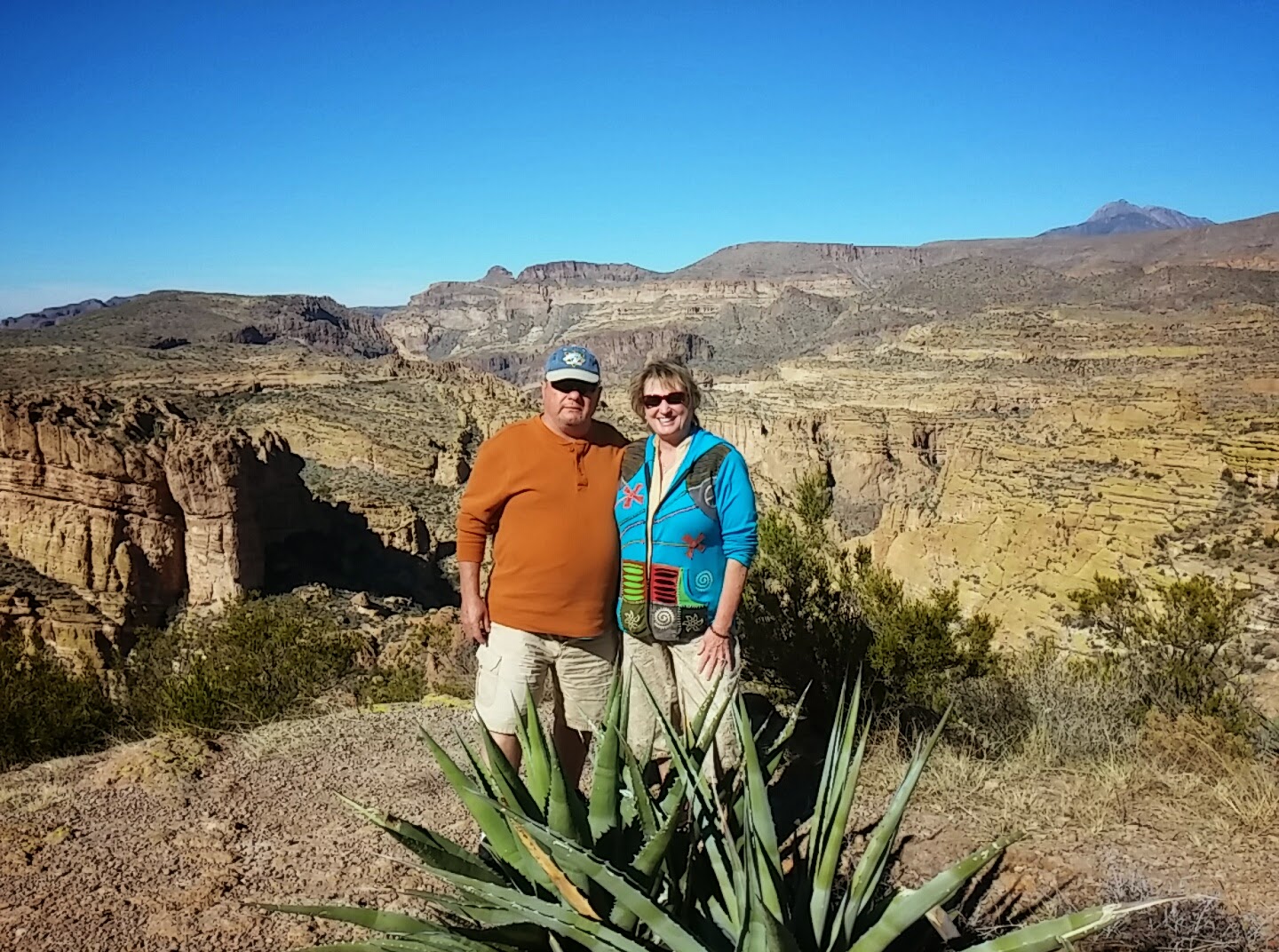"The Apache Trail combines the grandeur of he Alps, the glory of the Rockies, the magnificence of the Grand Canyon and then adds the indefinable something that none of the others have." President Theodore Roosevelt
We took a day to explore the legendary Apache Trail. The original trail was a foot path that Apaches used to travel through the Superstition Mountains. It later became a stagecoach trail for miners and mountain men in search of their fortunes. It is Arizona's first designated "Historic Highway." While looking for desert bighorn sheep and coyotes we saw canyons, desert lakes, towering saguaro cacti and the beginning of desert wildflower buds.
 |
| Nice Curves! And Lots of Them! |
Apache Trail offers a scary ride at times, especially the heights and few guardrails. We certainly got a feel for the trail during the mining era.
 |
| Canyon Lake |
Tortilla Flat was a fixture of the Apache Trail since 1904 and provided a welcome stop for travellers on the Yavapai Trail which connected the Tonto Basin with the Salt River Valley.
 |
| Century Old Stage Stop |
The Apache Trail once served as a stage coach and freight wagon route from Mesa to Globe. Indians, cowboys and miners have all roamed the mysterious Superstition Mountains. Tortilla Flat is the last surviving stagecoach stop on the Apache Trail.
 |
| Yee Haw |
We grabbed lunch at the Superstition Saloon. You can saddle up at the bar and order a big burger or really, really hot chili.
 |
| Dollar Wallpaper -I Think I Will Start Tomorrow |
 |
| Look Out Miss Kitty |
 |
| Mountainside of Saguaros |
In 1906 the trail, now known as the Apache Trail, was completed as a freight road for the construction of the Roosevelt Dam. Mule teams once hauled men and materials that made Roosevelt Lake.
 |
| Roosevelt Dam |
Theodore Roosevelt Lake covers old farmlands and now supplies electrical power and water for irrigation and recreation.
 |
| Bridge Reflection |
The Salado Indians looked to the desert to supplement cultivated foods and fulfill their material needs. Mammals, birds, ad reptiles were important to their diet. They made tools from bones. Yucca provided edible stalks and buds, sewing needles from leaf tips, leaf fiber for rope nets, maps, and sandals, and roots for making soap.
 |
| It was a steep hike up to the ruins |
Built in the early 14th century, this village was part of a vast multicultural network that extended from the Four Corners region to Northern Mexico. While remains of thousands of similar villages dot the Southwest, this well-preserved building represents one of the last Salado cliff dwellings in the Southwest.
This cliff dwelling was occupied for about 100 years but there is indication that there were periods of extreme drought as well as devastating floods here. This may be why the Puebloans left as it would have impacted their gardens.
 |
| Prehistoric Indian Ruins |
 |
| At the Lower Cliff Dwelling |
 |
| Stone Grinding Tools - The Mano and Metate |
The metate was used to grind corn and mesquite pods into flour.
They also crushed beans, seeds and nuts.














No comments:
Post a Comment